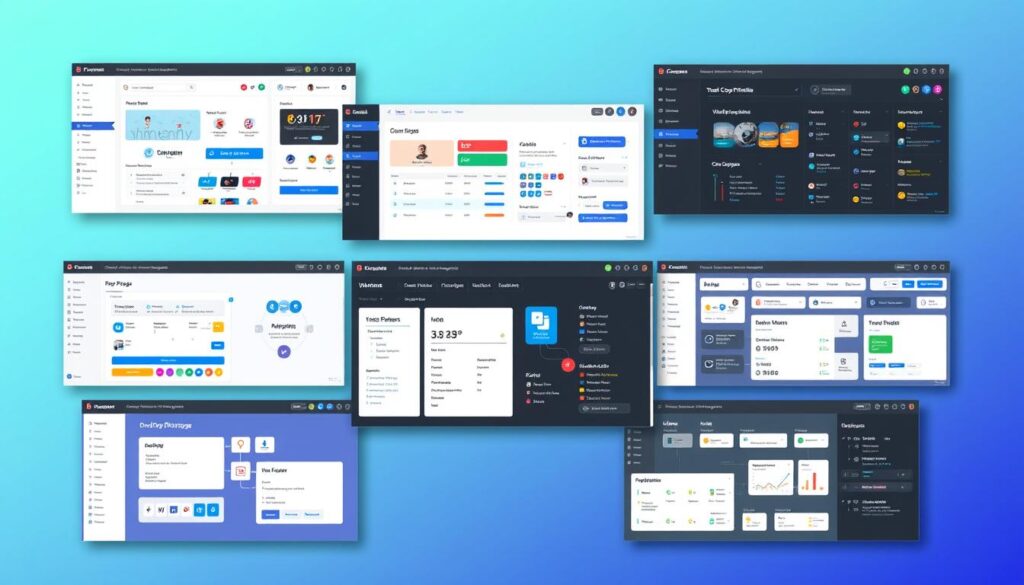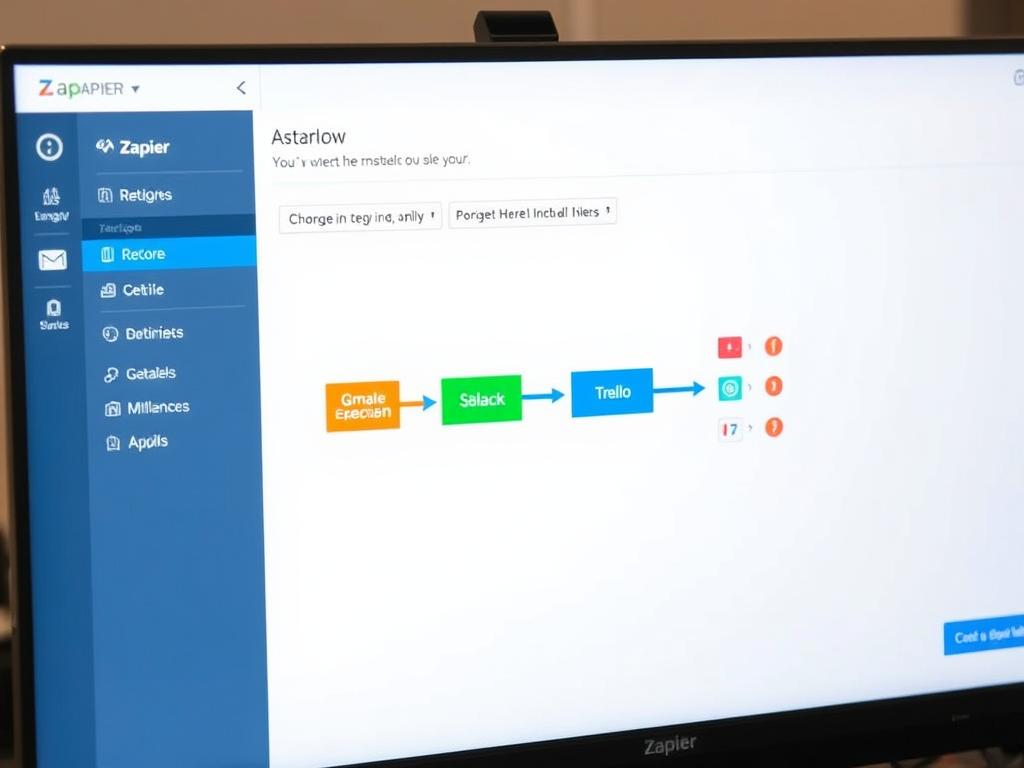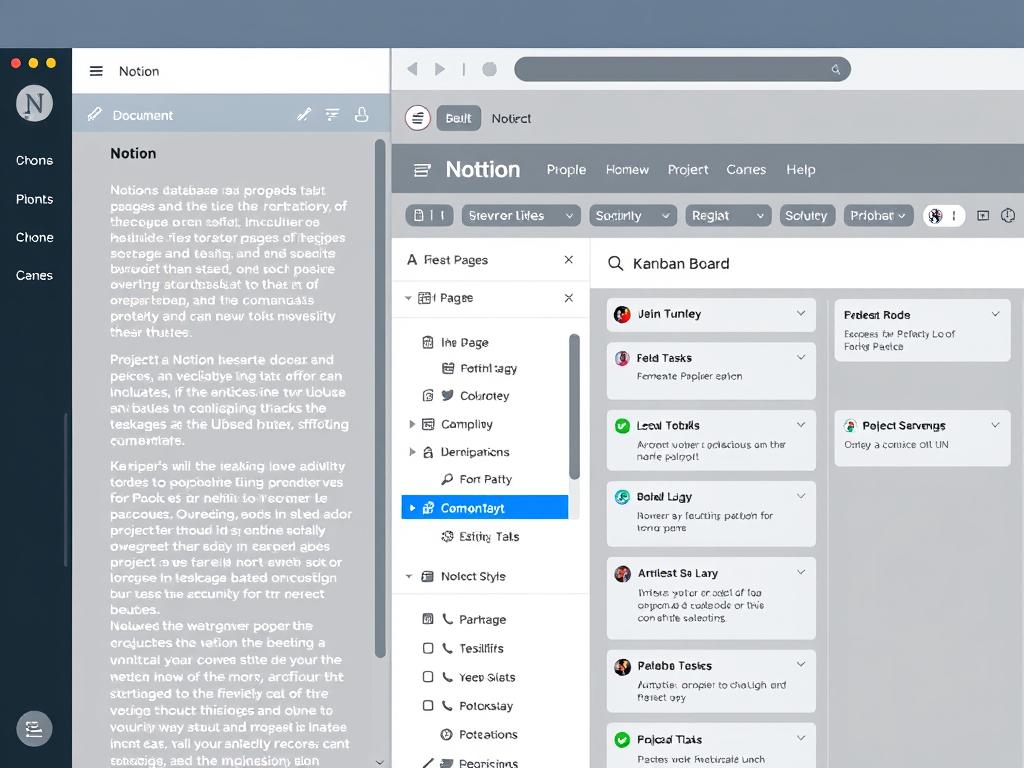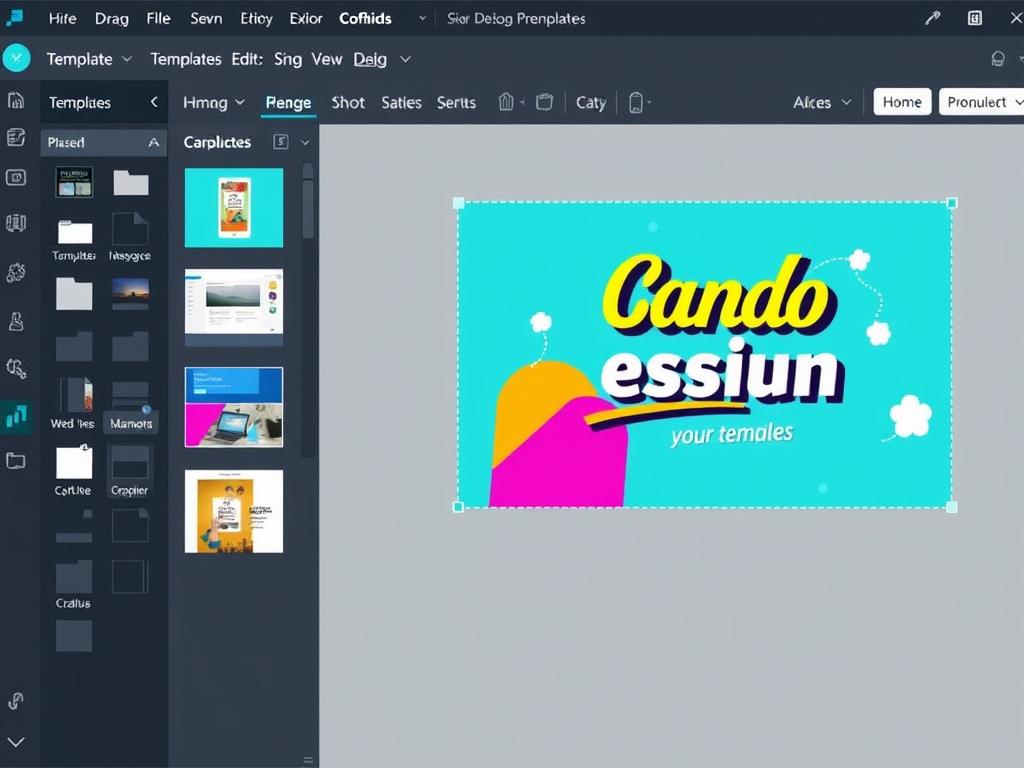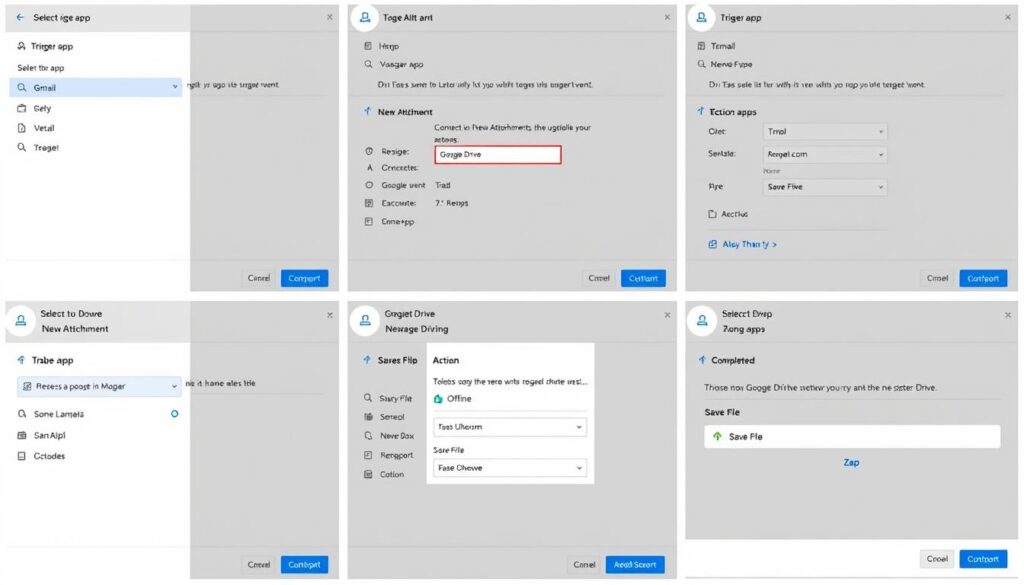In today’s fast-paced world, waiting weeks for developers to build solutions is no longer necessary. The rise of no-code tools for quick task completion has democratized software creation, allowing anyone to build applications, automate workflows, and design beautiful interfaces without writing a single line of code. These user-friendly platforms aren’t just functional—they’re actually enjoyable to use, making the process of creating digital solutions a delightful experience rather than a technical challenge.
Whether you’re a busy entrepreneur, a marketer with tight deadlines, or simply someone who wants to streamline repetitive tasks, these lovable no-code tools can help you accomplish more in less time. Let’s explore how these accessible platforms can transform your productivity and make digital creation accessible to everyone—regardless of technical background.
Why No-Code Tools Are Revolutionizing How We Work
No-code tools have gained tremendous popularity for good reason. They offer several compelling advantages that make them indispensable for modern work environments.
Lightning-Fast Implementation
Traditional software development can take months or even years. No-code platforms drastically shorten this timeline, allowing you to build applications and automate processes in days or even hours. This speed helps you respond to business needs and launch solutions faster than ever before.
Accessibility for Everyone
The most lovable aspect of no-code tools is their accessibility. With intuitive drag-and-drop interfaces and visual builders, anyone can create powerful applications without technical expertise. This democratization empowers team members across departments to contribute to digital transformation.
Cost-Effectiveness
Hiring developers is expensive, and custom software development projects often go over budget. No-code tools offer predictable subscription models that are significantly more affordable. You can build, test, and iterate without the hefty price tag of traditional development.
Flexibility and Adaptability
Business requirements change constantly. No-code platforms allow you to quickly modify your applications to adapt to new needs. This agility is crucial in today’s rapidly evolving business landscape, where being able to pivot quickly can make all the difference.
Reduced Technical Debt
Traditional coding often leads to technical debt—the cost of additional work caused by choosing an easy solution now instead of a better approach that would take longer. No-code tools help minimize this by providing standardized, tested components that work reliably together.
Empowered Creativity
When technical barriers are removed, creativity flourishes. No-code tools allow you to experiment, test ideas, and iterate quickly. This freedom to explore different approaches often leads to more innovative solutions that better address user needs.
Ready to experience these benefits yourself?
Explore our top recommended no-code tools below and start building your first project today—no coding required!
Top 5 Lovable No-Code Tools for Quick Results
These carefully selected tools stand out for their user-friendliness, powerful features, and ability to help you complete tasks quickly without writing code. Each offers unique capabilities while maintaining an intuitive interface that makes the building process enjoyable.
1. Zapier: Connect Apps and Automate Workflows
Zapier is the ultimate connector, allowing you to automate workflows between 3,000+ apps without writing a single line of code. It’s the perfect solution for eliminating repetitive tasks and creating seamless processes across your digital tools.
Key Features:
- Connect virtually any web app or service
- Create multi-step automated workflows (called “Zaps”)
- Schedule automations to run at specific times
- Filter actions based on specific conditions
- Format data automatically between applications
Perfect For:
- Automatically saving email attachments to cloud storage
- Creating tasks from form submissions
- Posting social media updates across multiple platforms
- Syncing customer data between CRM and marketing tools
- Sending notifications when specific events occur
Why It’s Lovable:
Zapier’s clean interface makes connecting complex apps feel like child’s play. The step-by-step setup process guides you through creating automations, and the extensive template library helps you get started quickly. Users particularly love the “aha!” moment when they realize how much time they’ve saved by automating previously manual processes.
2. Airtable: Flexible Databases Made Simple
Airtable combines the simplicity of a spreadsheet with the power of a database. It allows you to organize anything—projects, customers, ideas, inventory—in a flexible, visual way that makes data management intuitive and even enjoyable.
Key Features:
- Multiple views (Grid, Kanban, Calendar, Gallery, Form)
- Rich field types including attachments, checkboxes, and links to other tables
- Customizable interfaces for different team members
- Automation capabilities for repetitive tasks
- Robust API for extending functionality
Perfect For:
- Project management and task tracking
- Content calendars and marketing campaigns
- Product catalogs and inventory management
- Event planning and coordination
- Customer relationship management
Why It’s Lovable:
Airtable makes database management visual and intuitive. The ability to switch between different views of the same data helps teams collaborate effectively, while the colorful interface makes organizing information actually enjoyable. Users particularly appreciate how Airtable can adapt to virtually any use case while remaining easy to use.
3. Notion: All-in-One Workspace
Notion combines notes, documents, wikis, and project management into one versatile tool. It’s the digital equivalent of having your entire workspace organized exactly how you want it, with everything connected and accessible from anywhere.
Key Features:
- Flexible pages that can contain any type of content
- Databases with custom properties and views
- Templates for virtually any use case
- Collaborative editing and commenting
- Web clipper for saving content from around the web
Perfect For:
- Personal knowledge management
- Team wikis and documentation
- Project planning and tracking
- Meeting notes and action items
- Goal setting and progress monitoring
Why It’s Lovable:
Notion’s blank-canvas approach gives users the freedom to create exactly what they need. The block-based editor makes structuring information intuitive, while the ability to combine different types of content in one place eliminates the need to switch between multiple tools. Users love how Notion grows with them, adapting to new needs as they arise.
4. Canva: Design Made Easy
Canva transforms anyone into a designer with its intuitive drag-and-drop interface and extensive template library. Create professional-looking graphics, presentations, social media posts, and more in minutes—no design experience required.
Key Features:
- Thousands of customizable templates
- Extensive library of free photos, illustrations, and icons
- Brand kit to maintain consistent branding
- Collaboration tools for team design projects
- Magic Resize to adapt designs for different platforms
Perfect For:
- Social media graphics and posts
- Presentations and pitch decks
- Marketing materials and flyers
- Infographics and data visualization
- Digital and print advertisements
Why It’s Lovable:
Canva makes design accessible to everyone, removing the intimidation factor of professional design software. The drag-and-drop interface is intuitive, and the vast template library means you never have to start from scratch. Users particularly love the satisfaction of creating professional-looking designs quickly, even without any design background.
5. Bubble: Build Web Apps Without Code
Bubble is a powerful no-code platform that lets you build fully functional web applications without writing code. From simple landing pages to complex marketplaces and social networks, Bubble makes app development accessible to everyone.
Key Features:
- Visual programming environment
- Built-in database for storing and managing data
- Responsive design capabilities
- Workflow editor for creating complex logic
- Extensive plugin marketplace for added functionality
Perfect For:
- Building MVPs and prototypes
- Creating custom internal tools
- Developing customer-facing web applications
- Building marketplaces and platforms
- Creating dashboards and data visualization tools
Why It’s Lovable:
Bubble empowers users to build applications they never thought possible without coding. The visual interface makes complex logic accessible, while the responsive design capabilities ensure applications look great on any device. Users particularly love the feeling of accomplishment when they launch a fully functional application they built themselves.
Step-by-Step: Automate a Task in Under 10 Minutes with Zapier
Let’s walk through a practical example of how to use Zapier to automate a common task: automatically saving email attachments to Google Drive. This simple automation can save you countless hours of manual file management.
Sign up for a Zapier account
Visit Zapier.com and create a free account. You can use your Google account for quick signup.
Create a new Zap
Click the “Create Zap” button in the top navigation. This will take you to the Zap editor where you’ll build your automation.
Choose your trigger app
Search for “Gmail” and select it as your trigger app. This is the application that will start your automation.
Select the trigger event
Choose “New Attachment” as the trigger event. This means the Zap will run whenever you receive an email with an attachment.
Connect your Gmail account
Follow the prompts to connect your Gmail account to Zapier. You’ll need to grant permission for Zapier to access your emails.
Test the trigger
Zapier will look for a recent email with an attachment to test the trigger. Select one of the examples to continue.
Choose your action app
Search for “Google Drive” and select it as your action app. This is what will happen when the trigger occurs.
Select the action event
Choose “Upload File” as the action event. This will save the email attachment to Google Drive.
Connect your Google Drive account
Follow the prompts to connect your Google Drive account to Zapier.
Configure the action
Set up where and how you want to save the file:
- File: Select the attachment from the Gmail trigger
- Folder: Choose which Google Drive folder to save to
- File Name: You can use the original filename or create a custom naming convention
Test the action
Click “Test & Continue” to make sure the Zap works correctly. Zapier will upload the test attachment to your Google Drive.
Name your Zap and turn it on
Give your Zap a descriptive name like “Save Gmail Attachments to Drive” and turn it on. Your automation is now live!
Time-saving tip: You can further customize this Zap to only save attachments from specific senders or with certain keywords in the subject line. This helps keep your Google Drive organized automatically.
“I used to spend at least an hour each week manually downloading and organizing email attachments. With this simple Zapier automation, everything is organized automatically. It’s like having a personal assistant working 24/7.”
Ready to create your first automation?
Start with this simple example and discover how much time you can save with no-code automation.
7 Tips for Maximizing Efficiency with No-Code Tools
To get the most out of no-code tools and truly accelerate your task completion, follow these proven best practices:
1. Start with Templates
Don’t reinvent the wheel. Most no-code platforms offer pre-built templates for common use cases. These templates are designed by experts and can save you hours of setup time. Browse the template galleries before starting from scratch.
2. Connect Your Tools
The real power of no-code tools comes from integration. Connect your favorite platforms to create seamless workflows that eliminate manual data transfer. Look for native integrations or use Zapier to connect tools that don’t directly integrate.
3. Build for Scale
Even if your current needs are simple, design your no-code solutions with growth in mind. Structure your databases logically, use clear naming conventions, and document your workflows so they can be easily modified as your needs evolve.
4. Leverage Community Resources
No-code tools often have active user communities with forums, tutorials, and shared resources. Take advantage of these to learn best practices, troubleshoot issues, and discover creative solutions you might not have considered.
5. Test Before Deploying
Before relying on a no-code solution for critical tasks, thoroughly test it with real-world scenarios. Most platforms offer testing environments where you can simulate triggers and actions without affecting your live data.
6. Stay Updated
No-code platforms evolve rapidly, with new features and improvements released regularly. Stay informed about updates to take advantage of new capabilities that could further streamline your workflows.
7. Start Small, Then Expand
Begin with a simple project to build confidence and familiarity with the platform. Once you’ve mastered the basics, gradually tackle more complex challenges. This incremental approach prevents overwhelm and builds your no-code skills progressively.
Pro Tip: Set aside dedicated time each week to explore and experiment with your no-code tools. This investment in learning will pay dividends as you discover more efficient ways to complete tasks.
Frequently Asked Questions About No-Code Tools
Do I really need no-code tools if I already know how to code?
Absolutely! Even experienced developers use no-code tools to accelerate development and handle routine tasks. No-code platforms allow you to build solutions in a fraction of the time it would take to code them from scratch, freeing you to focus on more complex problems that truly require custom coding.
Are no-code tools secure enough for business use?
Most established no-code platforms invest heavily in security and compliance. Many are SOC 2 compliant and offer enterprise-grade security features. However, it’s always important to review the security practices of any tool you’re considering, especially if you’ll be handling sensitive data.
Will I hit limitations with no-code tools?
While no-code tools have become incredibly powerful, there may be specific complex functionalities that require custom code. However, many platforms now offer “low-code” options that allow you to extend functionality with small snippets of code when needed. For the vast majority of business applications, no-code tools provide more than enough capability.
How long does it take to learn a no-code tool?
The learning curve varies by platform, but most no-code tools are designed to be intuitive. You can typically build basic solutions within hours of starting, and become proficient within a few weeks of regular use. The investment in learning these tools pays off quickly through the time saved on future projects.
Are no-code tools cost-effective for small businesses?
No-code tools are often ideal for small businesses with limited resources. Most platforms offer tiered pricing with affordable entry points, and the time saved compared to traditional development creates significant ROI. Additionally, the ability to quickly iterate and adapt solutions as your business evolves provides long-term value.
Embrace the No-Code Revolution
No-code tools for quick task completion have democratized software development, making it accessible to everyone regardless of technical background. These lovable platforms empower you to build solutions, automate workflows, and bring your ideas to life without writing a single line of code.
By leveraging the power of visual interfaces, pre-built components, and intuitive design, you can accomplish in hours what used to take weeks or months of development. The time and resources saved allow you to focus on what truly matters—solving problems, serving customers, and growing your business.
The no-code movement is just getting started. As these tools continue to evolve and become more powerful, the possibilities will expand even further. Those who embrace these technologies now will be well-positioned to adapt and thrive in an increasingly digital world.
Start Your No-Code Journey Today
Choose one tool from our list, create a free account, and build your first project. You’ll be amazed at what you can accomplish without writing code.
Share Your Experience: Have you used any of these no-code tools to complete tasks quickly? We’d love to hear about your experience and what you’ve built! Share your story in the comments below or on social media using #NoCodeRevolution.
